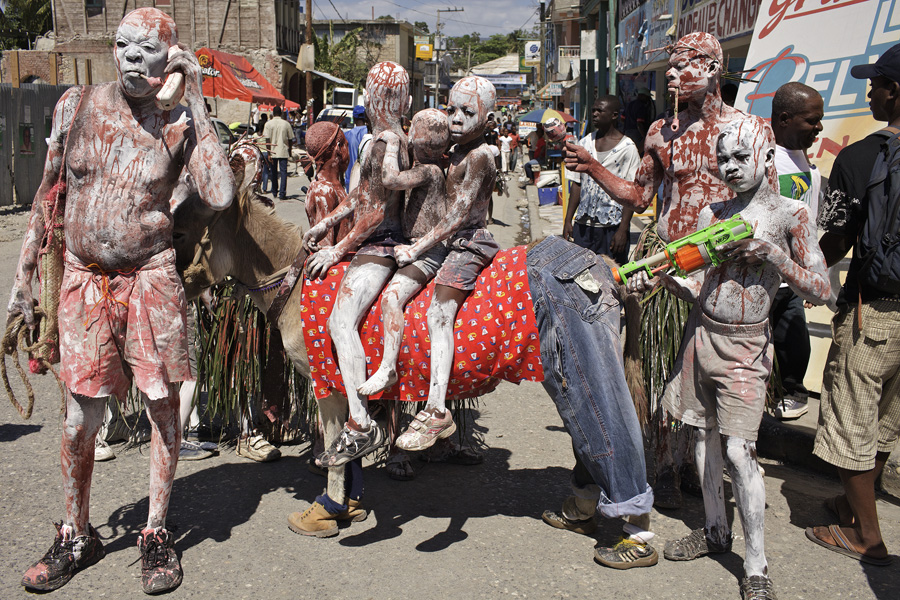The streets of Port-au-Prince are just around the corner from McGill—or at least as much of them as anyone can expect to see without traveling to Haiti.
They are put on display in Haiti: Chaos and Daily Life, an exhibition by Montreal photographer Benoit Aquin now showing at the McCord Museum. Featuring 40 large colour photographs, the exhibit offers a glimpse into the day-to-day lives of Haitians over the past three years, and explores how they continue to cope with the aftershock of a devastating earthquake.
Aquin has always been particularly interested in the impact of natural disasters on the environment, and the ways in which communities cope with them. He has travelled all over the world to capture these scenes with his camera, from the dustbowl in China (his exploration earned him the prestigious Prix Pictet award in 2008) to the Nile River. But Aquin has forged a special connection with Haiti, an island he first visited when he was four years old. Haiti: Chaos and Daily Life is laid out not chronologically but rather somewhat thematically, from devastation on the streets, to an exploration of the hurricane’s impact on buildings and their interiors, and ultimately to colourful images of a wild carnival in Port-au-Prince.
Excerpts from The World is Moving Around Me, the 2010 memoir of Haitian-born Montreal novelist Dany Laferriere accompany the artwork, and shed some light on Aquin’s intentions. One quotation reads, “During the last two weeks of January 2010, Haiti was seen more often than during the previous two centuries. And it wasn’t because of a coup or one of those bloody stories mixing voodoo and cannibalism—it was because of an earthquake, an event over which no one has any control. For once, our misfortune wasn’t exotic. What happened to us could have happened anywhere.”
Many Canadians may find images of women bathing in mud or splattered with blood in a series of photographs titled “Ceremony” to be ‘exotic.’ But such generic titles stress the globally transcendent rather than locally specific nature of these rituals.
Aquin has a penchant for capturing motion, especially people in motion. These sights are often hopeful: relief workers helping the injured and excavating rubble, a man jumping up ‘in flight.’ But amidst these images, there is the occasional photograph that stops you in your tracks with its eerie stillness—like the photograph of a dead man sprawled on the street, ironically situated next to a cardboard box with the slogan, “Nice Walk.”
But such images are the exception. Overall, the exhibit does not stress despair, but rather, celebrates resilience. Perhaps such an optimistic portrayal of Haiti’s recovery has the potential to create a dangerous sense of false comfort. After all, Haiti is still struggling to get back on its feet—one could argue that more gruesome documentation of the event would garner more donations and political action. Aquin’s exhibit shouldn’t be considered as an all-encompassing rendering of events. It isn’t a call for action, but for precisely this reason, it is also very much a work of art.
Haiti: Chaos and Daily Life is on display until May 12 at the McCord Museum (690 Sherbrooke West). Student admission $8, free Wednesdays.








